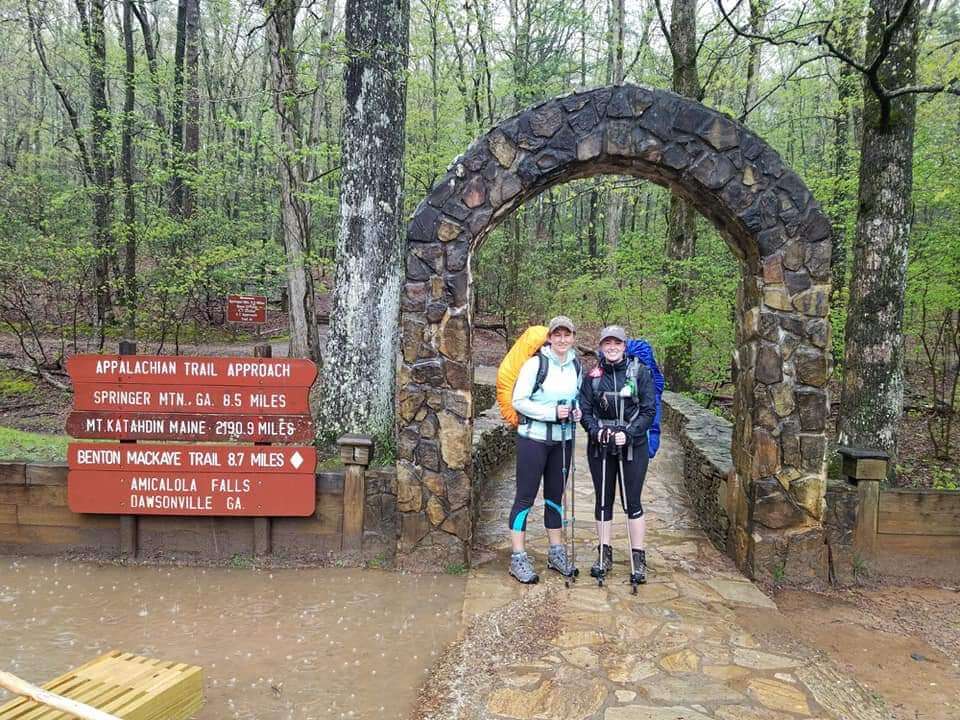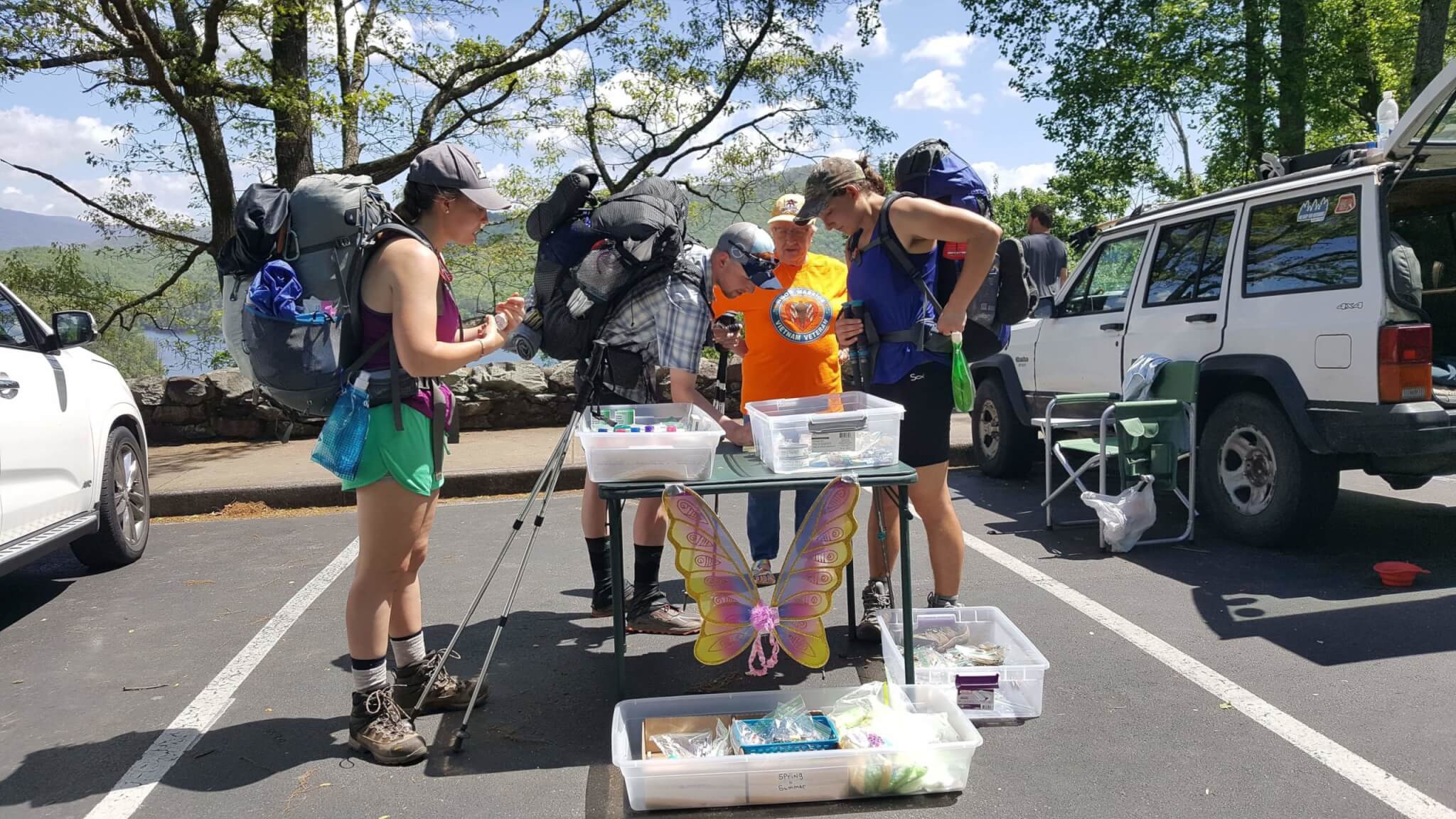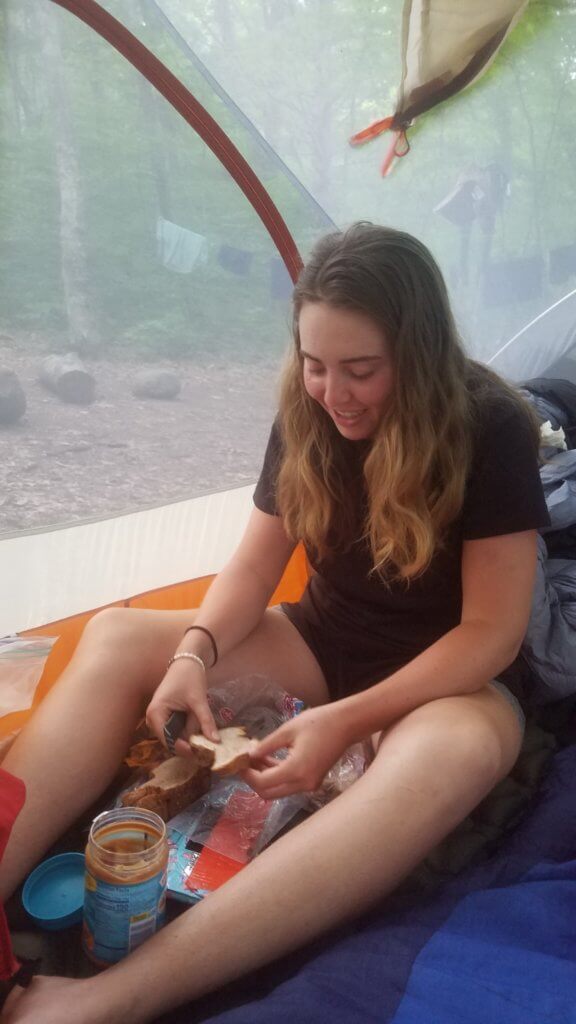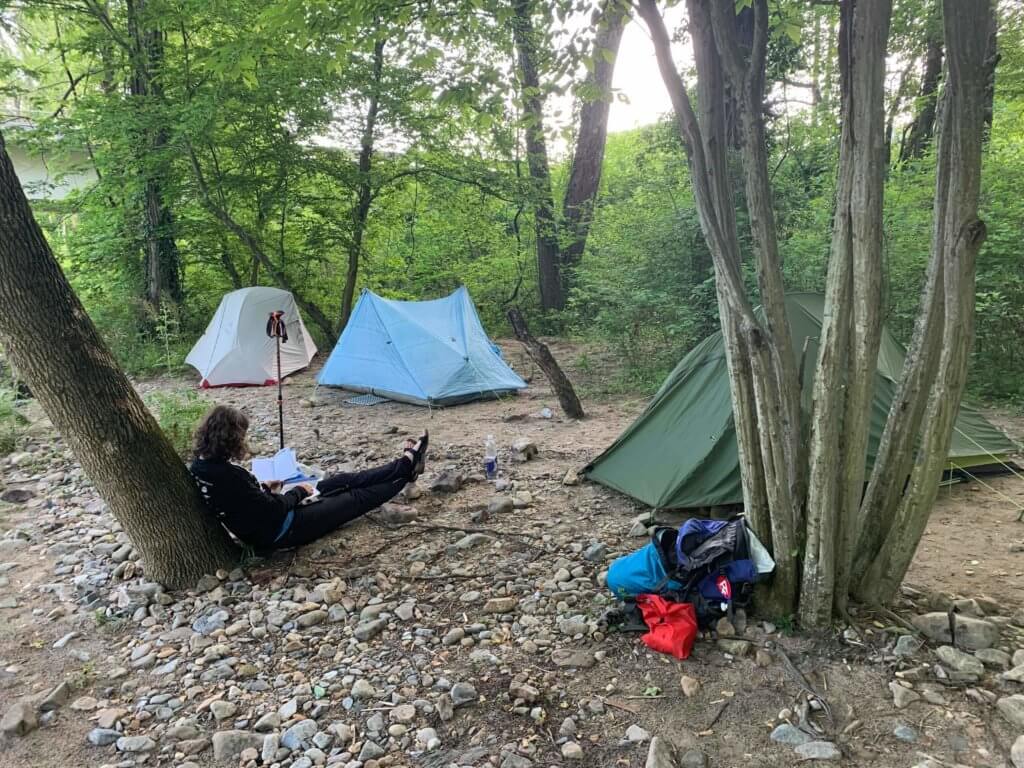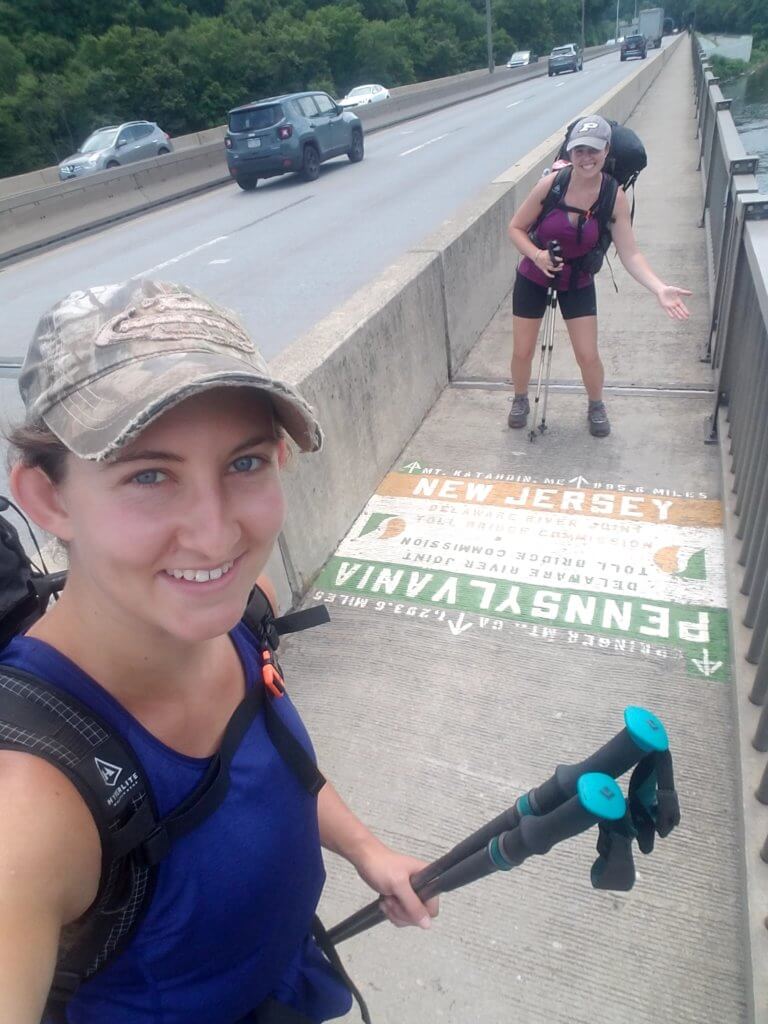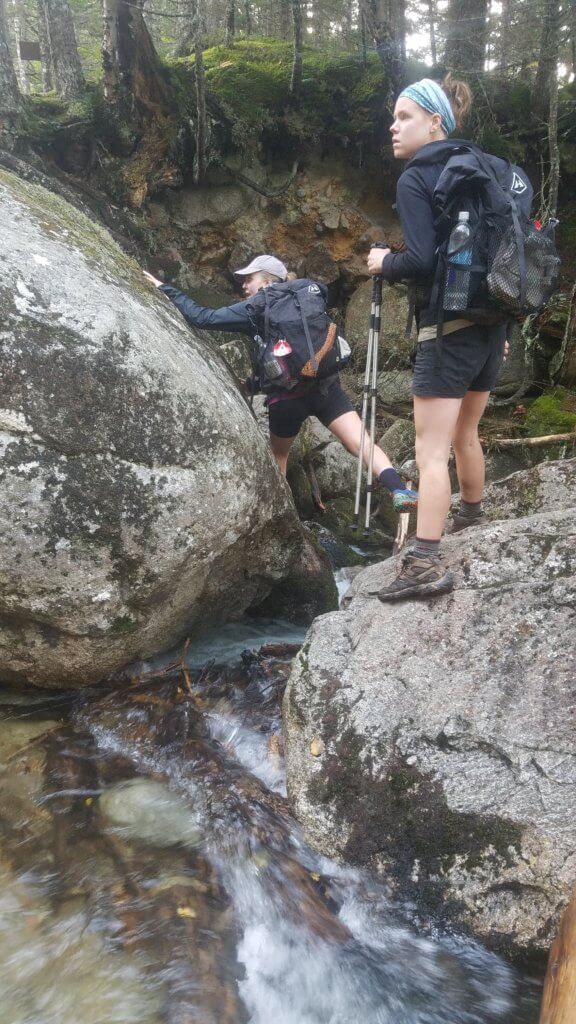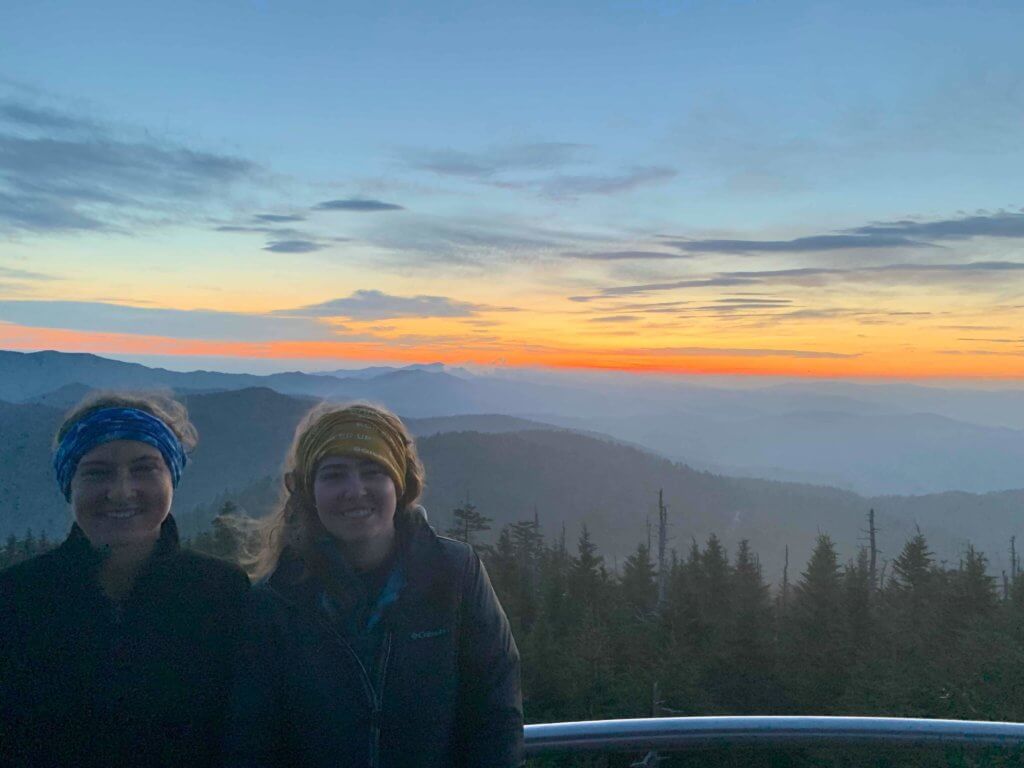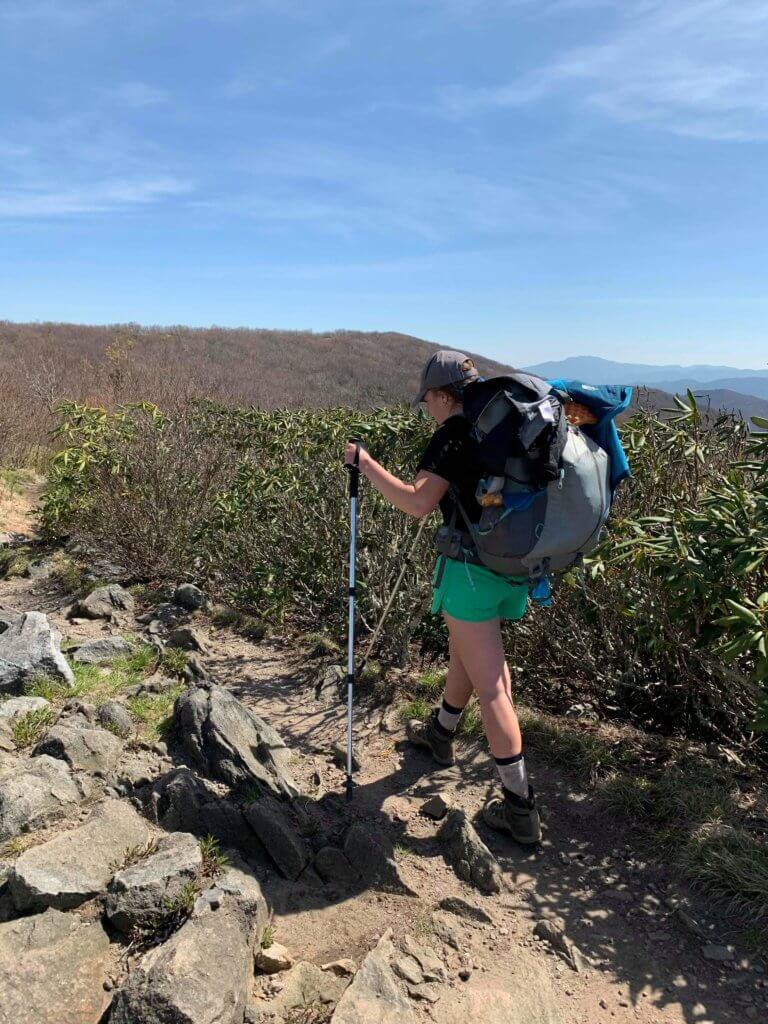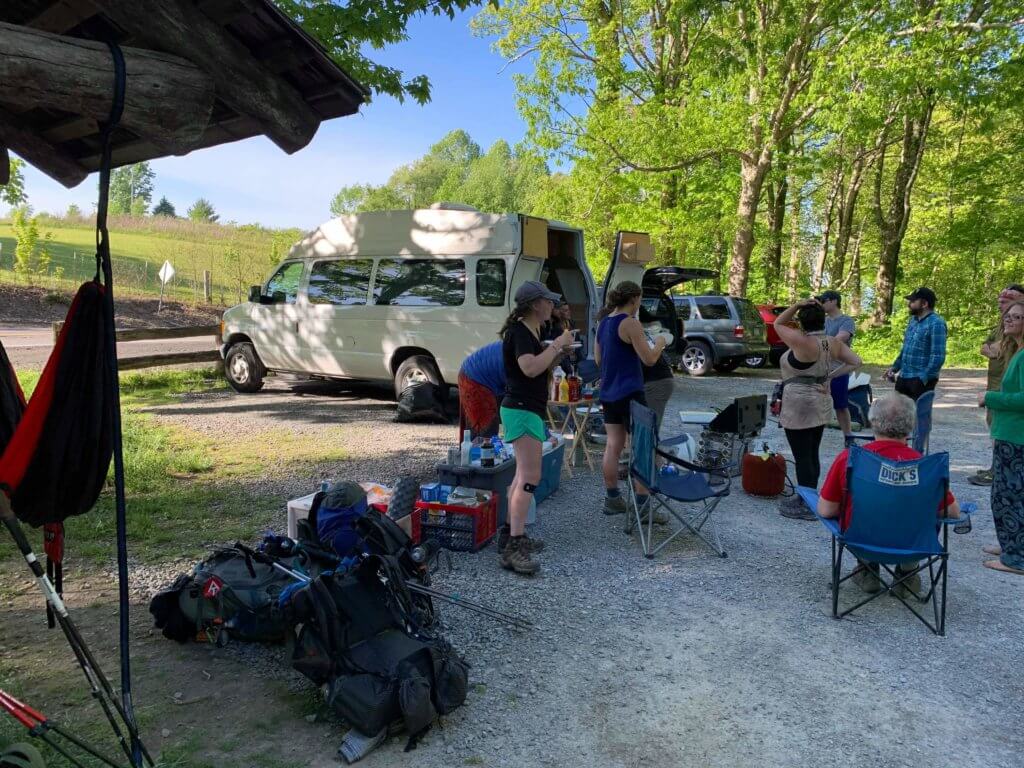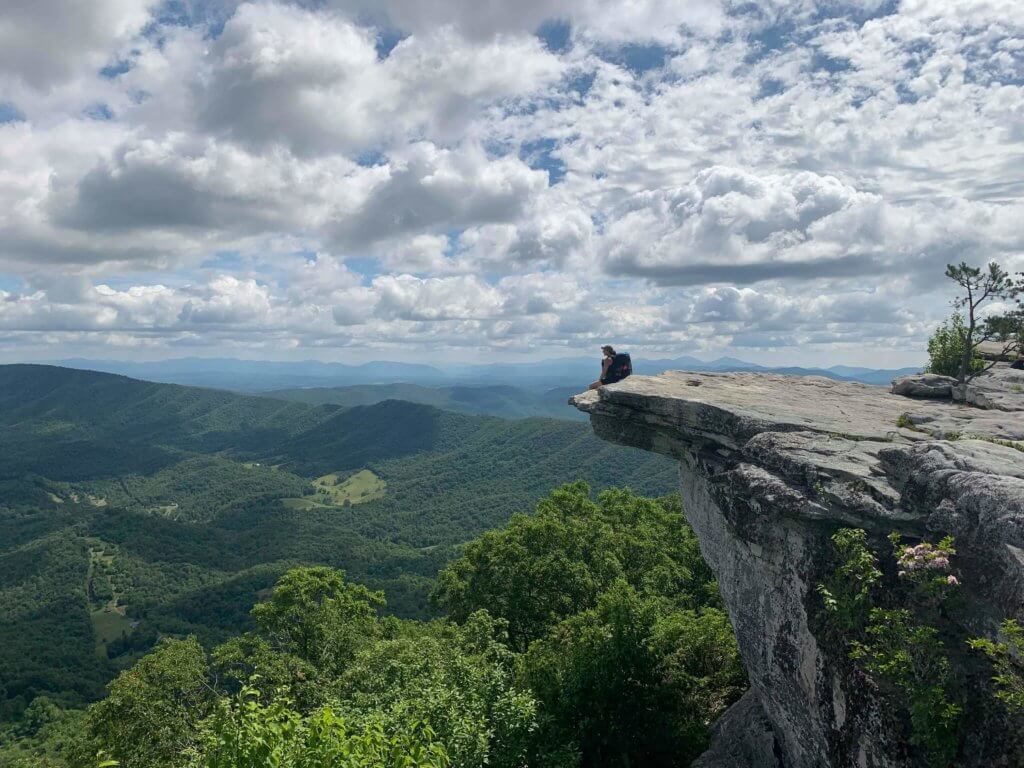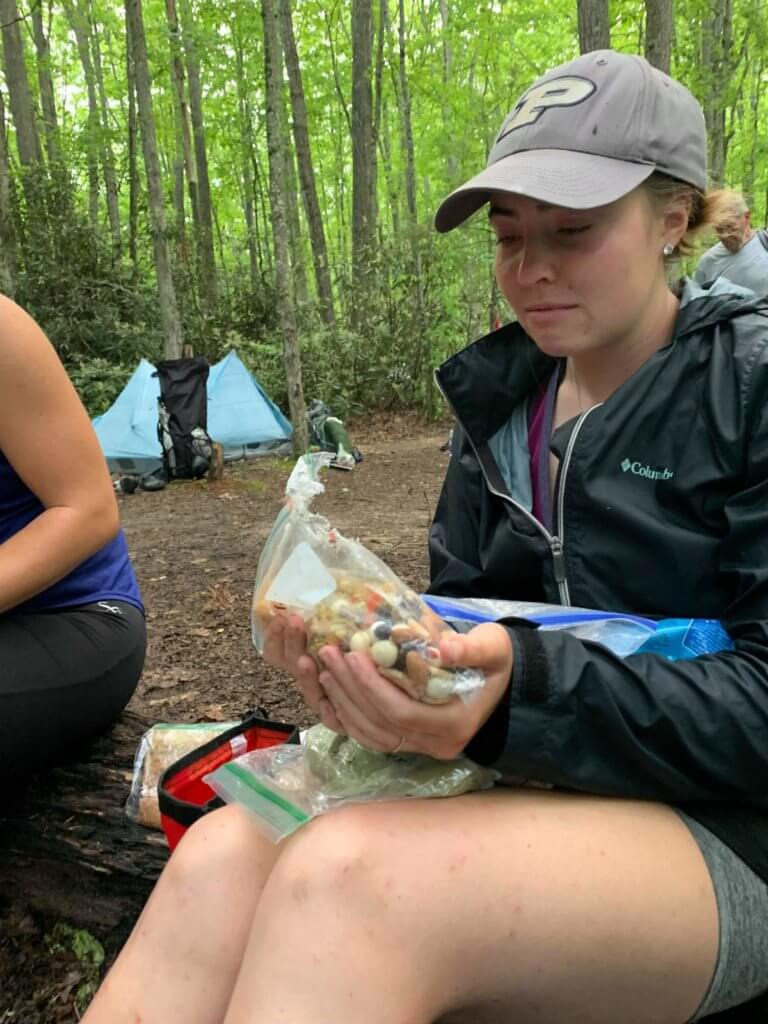Conquering the Trail
Purdue Forestry and Natural Resources (FNR) alumnae Rebekah Lumkes and Baleigh Haynes joined an elite group of individuals, completing a 2,192 mile thru-hike of the Appalachian Trail. For one, it was the culmination of a college pipedream. For the other, it offered a much-needed life reset. Here is their story.
It had all of the makings of a Hollywood movie. Two best friends set out on an epic journey covering nearly 2200 miles, with sweeping mountain and landscape views, encounters with wildlife and bonding with fellow wayfarers. And, for some additional interest, throw in torrential downpour and hail, bouts with sickness, an onslaught of bug bites and the overwhelming internal struggle to persevere.
But this was no Hollywood movie. For 2017 Purdue Forestry and Natural Resources alumnae Rebekah Lumkes and Baleigh Haynes this was their Appalachian Trail experience as the pair joined an elite group of individuals who have completed the 2,192 mile thru-hike.
For one, it was the culmination of a college pipedream. For the other, it offered a much-needed life reset. Here is their story.
Setting the Stage: The Journey to 5 Million Steps
“I don’t remember when I first heard about the trail, but I know my sophomore year I went hiking and I was like, ‘I really want to thru-hike sometime, maybe I’ll do it after I graduate,’” Rebekah recalls.
When Rebekah shared her dream with her best friend, Baleigh was supportive, but never thought she would be a part of such a quest.
“When we were in college, Rebekah always said something about “Oh, it would be so cool to hike the Appalachian Trail,” Haynes said. “I would be like ‘yeah, that would be totally cool,’ knowing very well that I would never do it because it was outside of my comfort zone.
“Then in the summer of 2018, I went through some life changes and I was like, you know what I really need is just to do something outside of my comfort zone, so I just called Rebekah up and said ‘what are you doing next summer? Do you want to hike the Appalachian Trail with me?’”
A Journey Starts with a Single Step, in the Rain …
“It’s pretty crazy and incredible and hard for me to find words,” Rebekah says even still a few months later. “Four and a half months going towards this one goal and you’re like ‘it’s going to be done today and I’m doing it.’ It was absolutely incredible to be up there. It was pretty special to be at the top, especially having Baleigh there as one of my best friends.”
Training Pays Off: Utilizing their FNR Skillset
Rebekah and Baleigh utilized their wildlife backgrounds to enhance the hiking experience, spotting various animals, foraging and seeing the landscape as more than a pretty view.
Preparation from plant and wildlife identification classes allowed the pair to spot birds, find alternate sources of food and protect fellow travelers from dangerous plants, such as poison ivy.
“We kept a bird list the entire time because I’m really big into birding, which was definitely from classes,” Rebekah said. “We were probably some of the few hikers who knew all of the different plants out there. By no means did we survive on wild food, but we would forage pretty frequently. I ate violets throughout the hike and we found some edible greens one night and put them into our ramen. A lot of the stuff that you learn in class about high up on mountains vs. lower elevations, we got to see that firsthand. The classwork and everything we learned (in FNR) definitely came in handy and we put it to use every single day.”
“The classwork and everything we learned (in FNR) definitely came in handy and we put it to use every single day. ”
Baleigh noted her Forestry & Natural Resources' ID classes made the journey more enjoyable.
“Rebekah is fantastic at dendrology so she would quiz me on things,” Baleigh said. “Knowing what poison ivy looked like was really helpful for everyone we hiked with.
“It was also great that we knew what wild edibles were out there in what seasons. We were walking up the coast as berry season was coming along, so we were able to tell people to try different things and also pick different things to add to our meals. It was incredible seeing that this isn’t just a tree or a rock, this is an incredible habitat that so many animals and plants need.”
Speaking of animals, the birds were not the only wildlife the hikers saw along the way.
“I think I got up to 13 bears by the end of the trip,” Rebekah recalled. “Most of them would just run away as soon as they saw hikers. But, there was one morning that I left really early before everyone else and it was still kind of dark outside. I was hiking by myself and I looked over and saw a mom – a sow – bear with a cub and they were just browsing some food over there and grazing and didn’t see me at all. That’s always one of my favorite encounters – when I can watch wildlife just acting naturally without me disturbing them.”
It was an encounter with a flying squirrel that stuck out to Baleigh.
“I personally ran into an unfortunate situation with a flying squirrel. It ate through my food bag and ate my trail mix. I was a little bummed I didn’t get to see a moose, but maybe it’s a good thing I didn’t run into one.”
Reaching the Climax: Summiting Katahdin – A Tale of Two Climbs
As the final day of their hike approached, emotions ran high, not only because the journey was coming to an end, with just five miles remaining, but because challenges lie ahead.
Baxter Peak at Katahdin is 5,267 feet in elevation.
Baleigh was the first to reach the summit.
“It was a roller coaster of emotions from being really excited and then absolutely terrified and then excited again and stunned that I was done,” she shared.
Baleigh was at the top waiting for Rebekah to make her way to the coveted Katahdin sign.
When Haynes’ mother dropped the pair off in Springer Mountain, Georgia, they signed up and got their start number and all their imagining quickly became real.
“We started in severe weather – it was like thunderstorms and there were tornado warnings,” Haynes recalls. “Everything was soaked on our first day. It was an experience. Day 2 we were just like let’s get to camp and dry out our stuff.”
Early tests showed the pair that they had the perseverance to carry on.
“We got hail our first week in and then a lot of rain and some snow,” Lumkes said. “One morning, I don’t know how many miles we were originally going to hike, but we ended up doing seven to a shelter. It had been raining all morning, so we got there soaking wet, stripped down, put dry clothes on and I got in my sleeping bag and was making hot oatmeal to warm up. Then our friend got there and was like, ‘Guys we should go another seven miles.’ We were all settled in for the day, but we said ok and we had to put our wet clothes back on and head back out in the rain. I think that was a defining moment in our trip, where we were like ‘well, if we just did 14 miles in the rain, had to stop halfway through and then push through again, we can probably do anything.’”
Baleigh used pep talks from home to push through the doubt.
“I was sick through Massachusetts, Vermont and New Hampshire and got better when we were starting Maine,” Baleigh said. “Every day when I was sick I was calling my fiancé and saying ‘I don’t know why I’m out here, I just want to quit’. He would say ‘You don’t actually mean that, you are just saying that because you are sick and it is hard to breathe.' I wanted to quit every single day, but I was like ‘I can’t even quit because I don’t have a way home from where I am at, the only way I can get home is if I keep walking.’”
Rebekah shared the importance of perseverance. “You have to stay very mentally focused, but it’s a really cool way to see 14 states on the Eastern side of the United States,” Lumkes said. “Getting to hike through them and getting to be at a different spot every day and seeing new things was really cool.”
Behind the Scenes: The Logistics, Cast and Crew
Baleigh and Rebekah hiked around 22 miles a day, although they had some days they didn’t hike. They also took 10 days off in July, leaving the trail to come home for the weddings of Rebekah’s sister and a mutual friend.
They spent four and a half months on the trail. The pair began the hike April 15 in Springer Mountain, Georgia, and ended Sept. 5 by summiting Mount Katahdin at Baxter State Park in Maine.
The majority of their nights were spent camping in a tent. Once every week or so, the pair would stay in either a hotel or a hostel or someone’s house.
They would periodically visit the towns, located every three to four days along the way, to buy supplies and food, to shower and recharge their cell phones, many times courtesy of Trail Angels, the people who help make the journey possible.
“Trail magic is anything that anyone does for a hiker,” Rebekah shared. “Sometimes it is just leaving water out for hikers when there are sections for a long period without any creeks or other water sources. Then sometimes it would be people who would come out to the back roads with their truck and a portable grill and make hamburgers and have a whole feast laid out for us. We were talking about trail magic at dinner one night with some trail angels who let us stay at their house and they were like ‘you know you can do trail magic any day of your life, you just have to help people.’ I’ve always wanted to do that, but now it is much more of a conscious thought.”
Baleigh also recalls the friendships made along the way.
“I’d say the best part of the trail is the people,” Haynes said. “We were truly blessed with the people that we met, both the hikers on the trail and the hiking community around the trail. They are just these incredible people sacrificing their time and resources to help strangers."
Rebekah’s Top Sites
- The White Mountains in New Hampshire. “In New Hampshire you have the hardest climbs and the hardest descents. You are rock climbing more than you are hiking and you have to pull yourself up on these ledges. But then you get up to the top and you are above tree line and there are 360-degree views of mountains, the best views of the entire trail.”
- The Smoky Mountain National Park in Tennessee and North Carolina. “When we were there it was still spring so none of the trees had leafed out, so you had really good views. It was gorgeous down there.”
- Grayson Highlands in Virginia. “It was cool because it is like a completely different ecosystem where it was open but you weren’t necessarily at a high elevation. It is very rocky and more shrubland.”
Baleigh’s Top Sites
“All of the New England states are really pretty, but the whole trail was pretty, even starting in Georgia with the rhododendron forest. I had never experienced one of those before, so I was like, ‘wow, I feel like I am in a rainforest.’”
- Max Patch and Big Bald in North Carolina. “Max Patch was a really cool bald and Big Bald had one of the best sunsets that we saw on the trail.”
- McAfee Knob and Tinker Cliffs in Virginia. “McAfee Knob is known as THE place for sunrises. It is one of the iconic picture-taking spots on the trail and it does not disappoint.”
- Harper’s Ferry in West Virginia. “Harper’s Ferry is the “mental halfway point” so that’s right about 1000 miles. It is a really cool historic place.”
Takeaways: Lessons Learned
Since the hike concluded in September, Rebekah and Baleigh have returned to the workforce, in nature of course, wiser and stronger from their journey.
After taking a little time to reintegrate herself into “normal life,” Rebekah is back in Georgia, about a half hour from where they started the hike, working as a crew leader on a whitetail deer research project while applying to grad schools.
“I am doing a lot of hiking right now because I am back in the Appalachian Mountains,” she shared. “I’m out of hiking shape, but I’m like, well I’ve done this before so I can hike up this mountain.”
As for Baleigh, she is back in her hometown of Fort Wayne, Indiana, working as an educator for the Fort Wayne Children’s Zoo.
“I am very thankful and blessed that I had the opportunity to hike and now I am right back into my field.”

